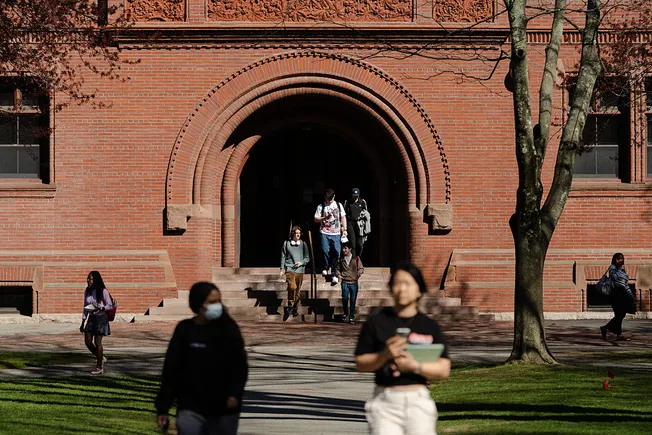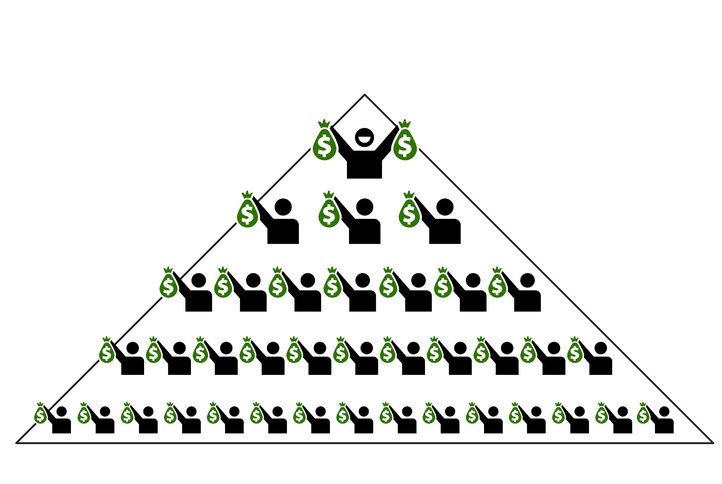This significant re-regionalisation of higher education is set to accelerate, bringing substantial benefits to the continent’s economic development, knowledge production, dissemination, and geopolitical influence. And this educational shift represents a strategic response that positions Asia to leverage its demographic advantages and establish itself as the global epicentre of higher education in the 21st century.
Demographic forces driving educational re-regionalisation
Asia’s demographic trajectory emphasises the inevitability of educational re-regionalisation. Home to 60% of the world’s population, Asia is projected to see an increase of 500 million people by 2050. This population surge creates unprecedented demand for higher education, with India expected to double its tertiary education enrolment from 40 million to 80 million students.
Asia accounts for 79% of global international student growth, with enrolment anticipated to rise from 377 million students in 2030 to 594 million by 2040. By 2050, the continent is expected to account for 75% of the world’s post-secondary graduates. The demographic dividend fuelling this educational demand coincides with declining populations in advanced economies, such as Japan and South Korea, which are experiencing annual decline rates of 0.5% and 0.2%, respectively.
This contrast creates complementary needs within the region: young, education-seeking populations in developing nations alongside established education systems seeking vitality amid aging societies. As a result, there are natural incentives for regional integration. Japan has implemented internationalisation strategies aiming to attract 400,000 international students by 2027, while South Korea aims for 300,000.
The remarkable rise of Asian universities in global rankings
The ascent of Asian institutions in global rankings provides direct evidence of the region’s growing educational strength. According to Times Higher Education (THE), Asia’s representation among ranked universities has increased from just over a quarter in 2016 to nearly a third today – a shift described by THE as “tectonic” in the movement of higher education from the West to the East.
Countries with advanced education systems have become regional magnets
Mainland China exemplifies this trend, with its universities in the world’s top 200 increasing from just two in 2016 to seven today. The rankings also highlight significant improvements in Malaysia, Singapore, Thailand, and Indonesia. Japan maintains the highest overall representation, with 119 universities, while India has overtaken China as the second-most represented country with 91 institutions.
Emerging patterns of intra-Asian student mobility
The acceleration of intra-Asian student mobility has become a defining feature of higher education re-regionalisation. Some 58% of outbound students from Southeast Asia now prioritise destinations within Asia over traditional Western hubs.
Countries with advanced education systems have become regional magnets; for instance, Japan hosted 242,444 Asian students in 2021, with 63% coming from China and Vietnam. Similarly, South Korea’s international enrolments from ASEAN nations grew impressively by 112% between 2016 and 2022. For example, at the University of Cyberjaya, we are witnessing a surge in students from Myanmar, Brunei, and Indonesia.
This mobility is increasingly structured through formal programs. The SEAMEO Regional Institute of Higher Education and Development’s Asian International Mobility for Students program has facilitated over 7,000 exchanges since its inception in 2010, spanning 87 universities across 10 countries. Likewise, the Campus Asia consortium, which connects China, Japan, and South Korea, has mobilised 6,625 exchanges since 2016, focusing on joint degrees in advanced manufacturing and robotics—directly aligning educational cooperation with economic priorities.
Policy frameworks enabling regional integration
Deliberate policy frameworks play a crucial role in enabling the regionalisation of higher education. Inspired by Europe’s Bologna Process, ASEAN member states are developing mutual recognition frameworks for academic qualifications. The ASEAN Qualification Reference Framework (AQRF) is a key initiative in this regard, aiming to align national standards with regional benchmarks, thereby reducing bureaucratic barriers to cross-border education.
Additionally, progressive immigration policies, such as Japan’s Specified Skilled Worker visa and Malaysia’s Digital Nomad Pass, contribute to comprehensive ecosystems that link education to employment opportunities across borders. The momentum for regional integration is further evidenced by the ASEAN Roadmap 2025, which supports the ASEAN Community Vision by strengthening people-to-people connectivity and improving access to higher education throughout the region.
This roadmap envisions ‘a resilient and sustainable ASEAN Higher Education Space’ that enables greater harmonisation and internationalisation of the region’s higher education systems.
The multidimensional benefits of higher education re-regionalisation
The re-regionalisation of higher education offers Asia multiple benefits that extend beyond education. Economically, it addresses the critical challenge of brain drain, which has historically led to the diversion of Asian talent to Western countries. By creating robust regional education networks, countries can retain intellectual capital while addressing demographic challenges.
This creates a symbiotic relationship where diverse demographic profiles become complementary assets rather than isolated challenges. Socially, increased regional educational mobility fosters a cohort of “Asian experts” who possess cross-cultural competencies relevant to the Asian context. These individuals serve as ambassadors of regional integration, possessing the language skills, cultural understanding, and professional networks necessary to facilitate cooperation across national boundaries.
It’s not usual in South-East Asia to be fluent in more than two languages. The Campus Asia consortium explicitly aims to develop this talent pool through shared resource platforms, thereby creating human capital that aligns with regional needs.
Conclusion
Evidence suggests that the re-regionalisation of higher education in Asia will continue to accelerate, driven by demographic imperatives, economic incentives, policy frameworks, and the remarkable rise of Asian universities in global rankings. This trend signifies a quantitative shift in student flow patterns and a qualitative transformation in Asia’s approach to human capital development.
As the continent advances economically, the regionalisation of higher education serves as a crucial mechanism for developing talent, fostering relationships, and generating the knowledge needed to address regional challenges.
The trajectory is clear: Asia, with its universities climbing global rankings at unprecedented rates and projected to account for 75% of the world’s post-secondary graduates by 2050, is increasingly keeping its educational development within regional boundaries. This shift promises not only to enhance educational opportunities for millions of Asians but also to redefine global knowledge production in the 21st century.
About the author: François Thérin is deputy vice-chancellor (research and enterprise) at the University of Cyberjaya in Malaysia.



























